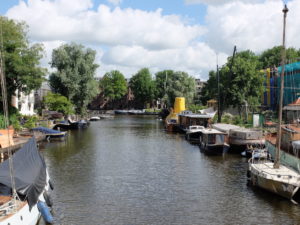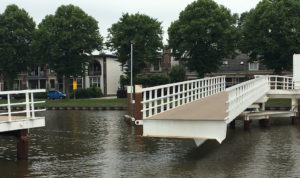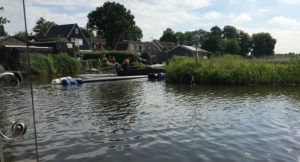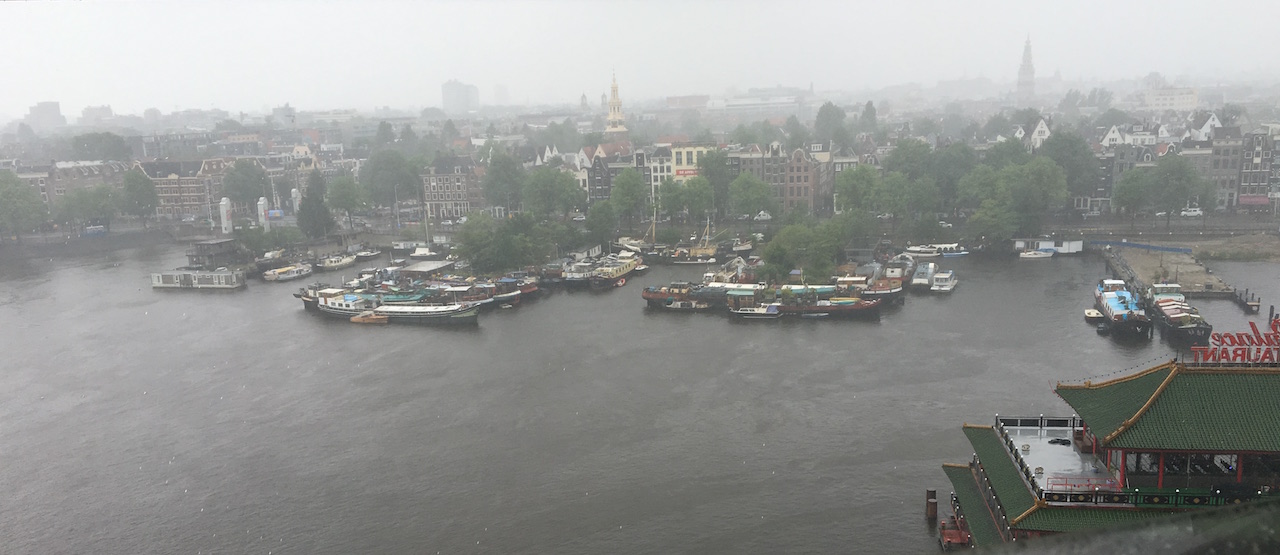The sea defines the Dutch. The earliest occupants of “The Lowlands” were seafarers who owed their survival to the sea. Later, they would band together to build dikes to move back the sea edge and establish more land to farm. Later still, they would use their business acumen and individual initiative to master shipbuilding and international sea trade. And through this all, they would organize collectively to battle the North Sea’s relentless battering of their fragile dike system.
It is a fundamental fact that 50% of the Netherlands is below sea level or at sea level and subject to high tide flooding. Prime, fertile areas of Holland are as much as 20 m. below sea level. Living safely below sea level requires vigilance, engineering, massive electric pumps and lots of money—$330 per year per Dutch resident ($5.6 billion). Few argue or complain about the expenditure, and the science and impact of global warming is not a debate here.

Amsterdam buildings and boats line the canals. Flooding in Amsterdam is not anticipated to be as much of a problem due to the many gates, pumps and and other flood control measures in place.
One benefit of this ages-old battle against the sea is the Dutch now lead the world in hydrological engineering and work world-wide to help other nations solve flood control problems. They also are leaders in responding to at-sea emergencies, salvaging damaged or sunken ships, and building custom ships.
The Dutch will need to keep expanding their expertise in the 21st century as they face rising seas.

More Dutch engineering: almost all bridges are draw bridges to permit boat and barge navigation. Some are hinged and swing open like a gate as shown here.
Dikes will need to be bolstered and raised, of course; an even more widespread threat will come from the Rhine, Waal, IJ and other major rivers flowing through the Netherlands. As the sea rises, they will rise as well. Couple that with more intense rains in the Alps, and the Dutch will need to build new levees along the length of most rivers to keep flooding at bay.
The $330 per year per resident is likely to go up significantly, the price of staying alive. The Dutch have always been up to the challenge.






